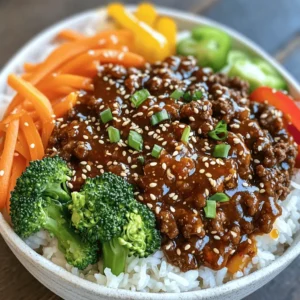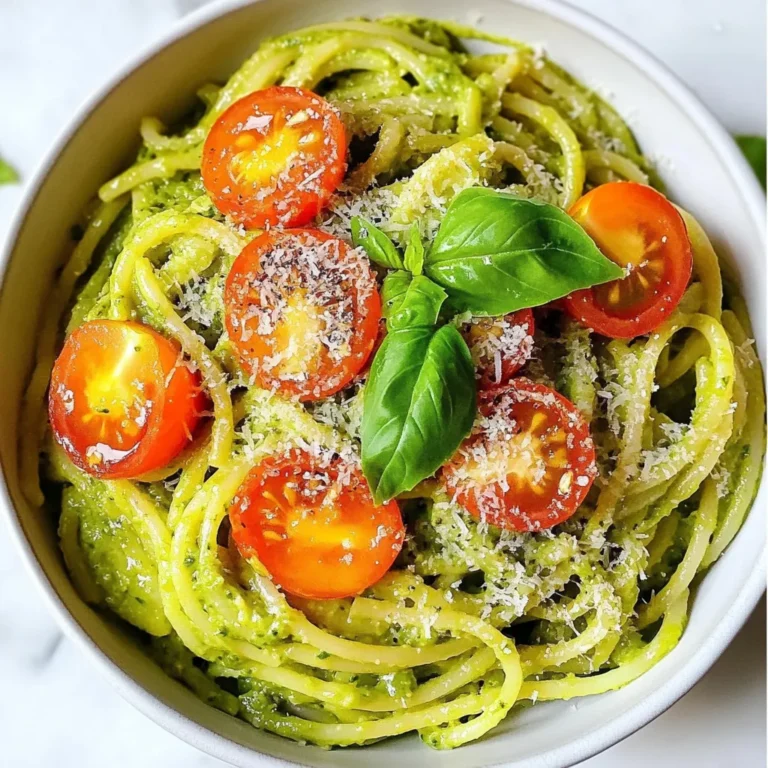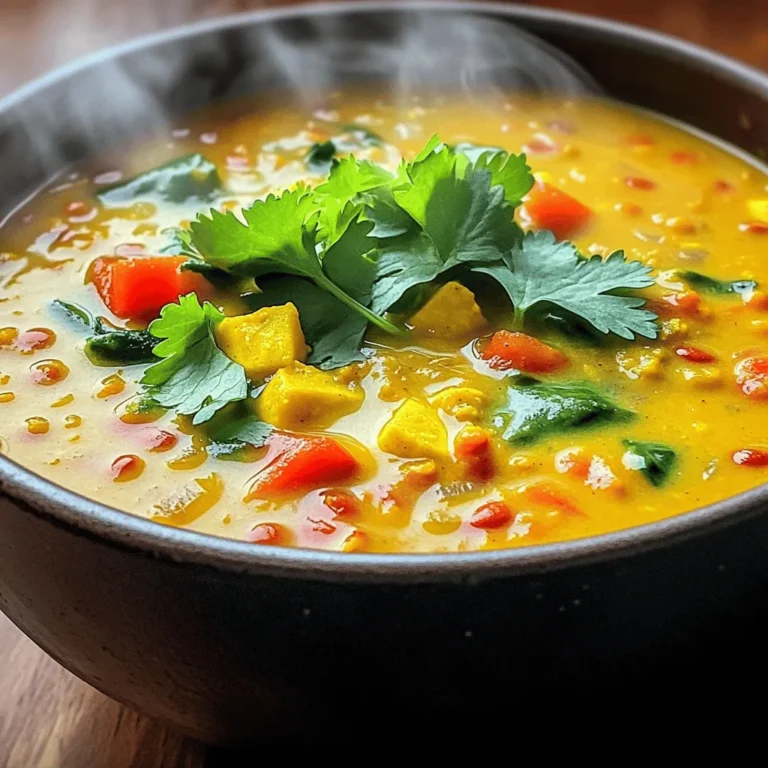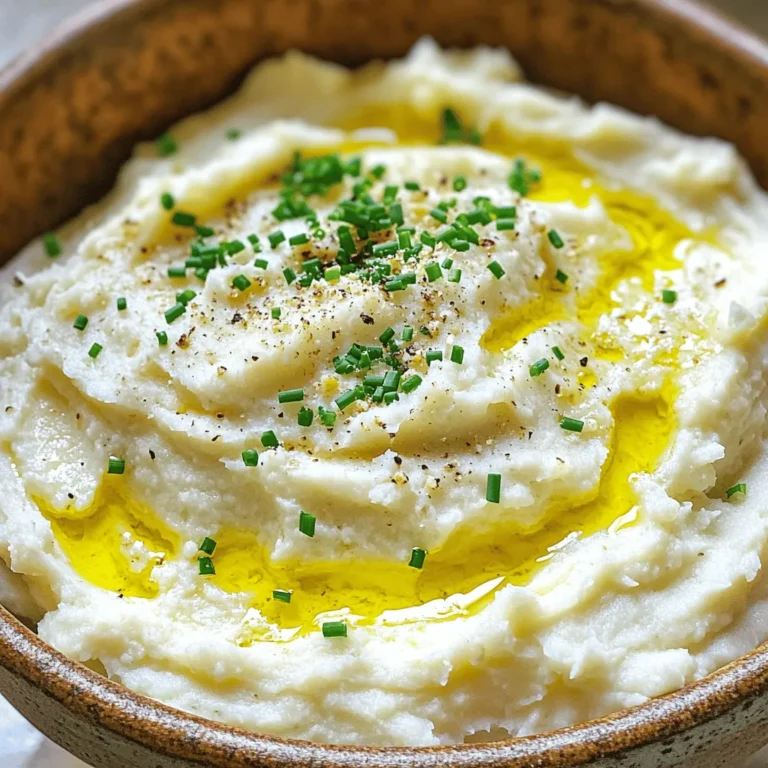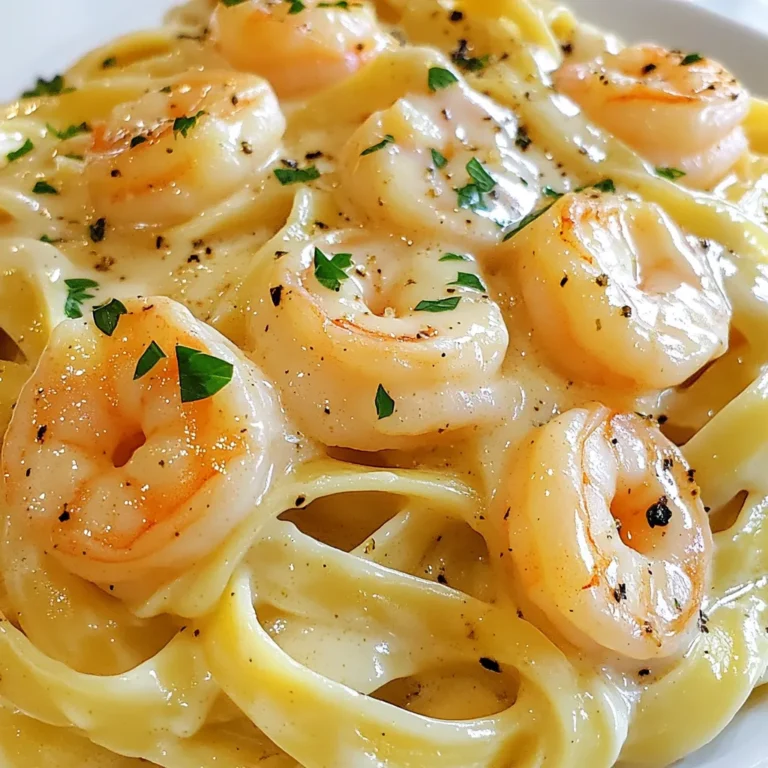Spicy Korean Beef Bowls Flavorful Quick Weeknight Meal
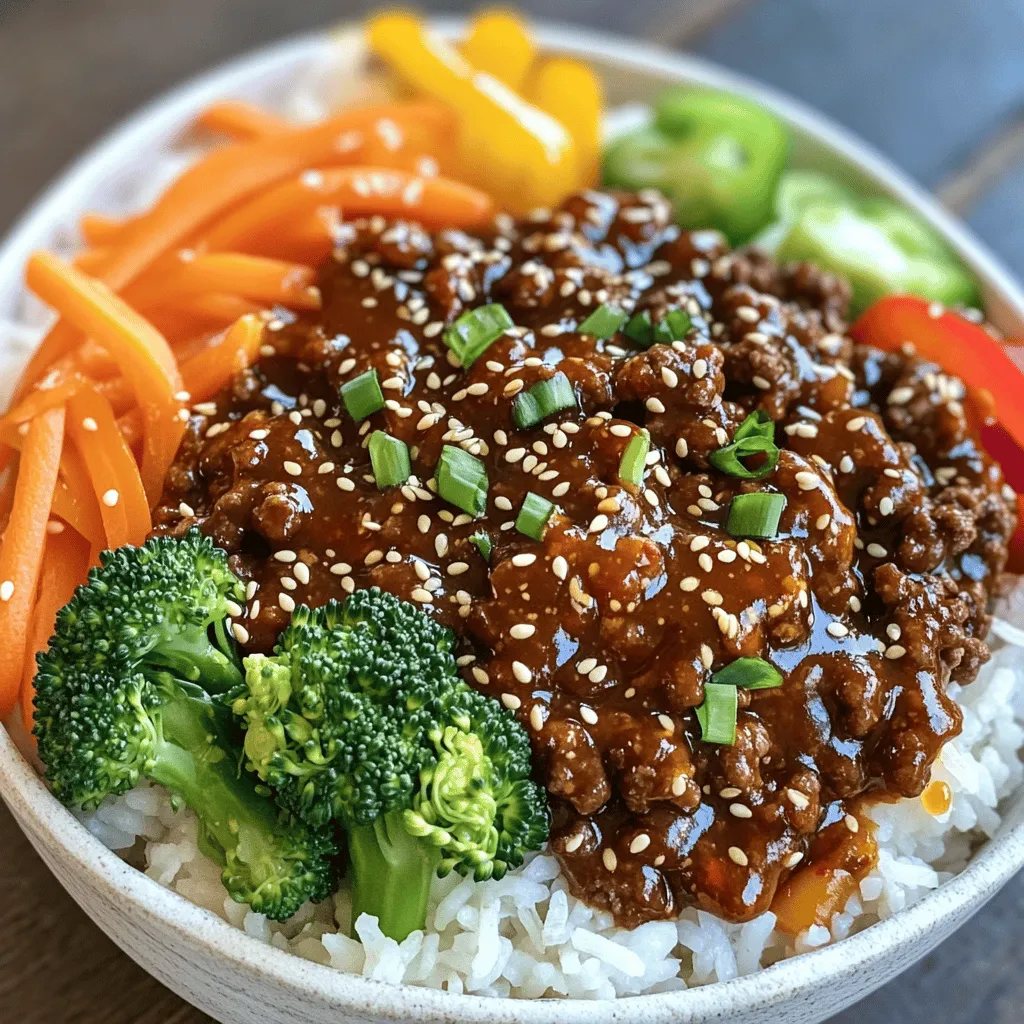
Looking for a quick and tasty weeknight dinner? Try my Spicy Korean Beef Bowls! This dish is packed with flavor and takes just 35 minutes to make. With juicy ground beef, fresh veggies, and a spicy sauce, it’s a complete meal your family will love. Plus, you can customize it to your taste. Let’s dive into the simple steps and ingredients to create this delicious meal at home!
Ingredients
Main Ingredients
- 1 lb ground beef (or ground turkey for leaner option)
- 1 tablespoon vegetable oil
- 3 cloves garlic, minced
- 1 inch piece ginger, finely grated
- 1 tablespoon gochujang (Korean chili paste)
Vegetables and Garnishes
- 1 medium carrot, julienned
- 1 cup broccoli florets
- 1 bell pepper, sliced into thin strips
- 2 green onions, chopped (white and green parts divided)
- 1 tablespoon sesame seeds (for garnish)
Sauce Ingredients
- 1 tablespoon soy sauce
- 1 tablespoon sesame oil
- 1 tablespoon packed brown sugar
- Option for cooked rice of choice (white, brown, or cauliflower) for serving
In this recipe, the main ingredients create a rich base for the beef bowls. Ground beef adds depth, while garlic and ginger deliver bold flavors. Gochujang gives that perfect spicy kick.
For vegetables, choose colorful options like carrots and bell peppers. They not only add crunch but also enhance the bowl’s visual appeal. Broccoli brings nutrition and pairs well with the beef.
The sauce combines soy sauce, sesame oil, and brown sugar. This mix balances salty, nutty, and sweet flavors. You can serve it over any rice you like.
This dish is quick to make and packed with taste. Perfect for busy weeknights!
Step-by-Step Instructions
Heat and Sauté Aromatics
Heat the vegetable oil in a large skillet over medium-high heat. Add minced garlic and grated ginger. Sauté these until they smell fragrant. This step brings out their natural flavors.
Brown the Meat
Next, cook the ground beef in the skillet. Break it into smaller pieces while it cooks. This process takes about 5 to 7 minutes. If there is excess fat, drain it for a leaner dish.
Prepare the Sauce
Now, stir in the gochujang, soy sauce, sesame oil, and brown sugar. Mix everything well to coat the beef with the sauce. This will give the meat its spicy and savory kick.
Add Vegetables
Add the julienned carrot, broccoli florets, and sliced bell pepper to the skillet. Mix them in gently. Cover the skillet and cook for 3 to 4 minutes. This helps the vegetables become tender but still crunchy.
Final Touches
Remove the skillet from heat. Fold in the chopped green onions, saving some green tops for later. To serve, spoon the spicy beef mixture over your choice of cooked rice. Sprinkle sesame seeds on top and add the remaining green onions for color and flavor.
Tips & Tricks
Cooking Tips
- Use a non-stick skillet. This helps prevent sticking and makes cooking easier.
- Adjust the gochujang amount. This lets you control the spice level to match your taste.
Serving Suggestions
- Choose vibrant dishes. Colorful plates make the meal more appealing.
- Serve lime wedges on the side. A squeeze of lime adds a fresh zest to the dish.
Meal Prep & Serving Advice
- Prepare your ingredients in advance. This makes cooking go much faster on busy nights.
- Store leftover beef mixture separately from the rice. This keeps the rice from getting mushy.
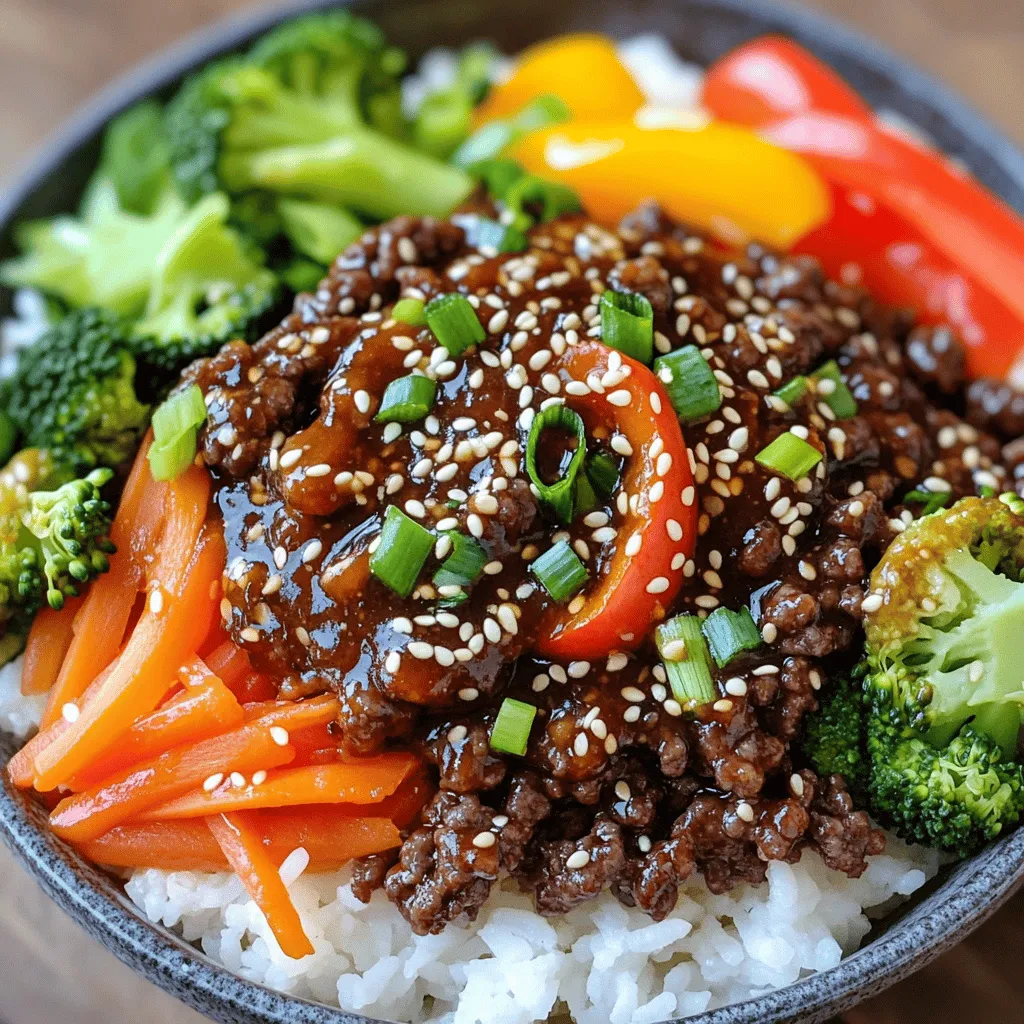
Variations
Ingredient Substitutions
You can swap ground beef for ground turkey. This makes the dish leaner. For a vegetarian option, use crumbled tofu or any plant-based meat. You can also add different veggies. Zucchini, snow peas, or bell peppers work great. These changes keep the dish fresh and fun.
Flavor Enhancements
To add more zing, try a splash of rice vinegar. This will brighten the flavors. You can also play with spices. Cumin or paprika can give you new tastes. Adjust these to fit your palate. Each touch makes the dish uniquely yours.
Serving Variations
For a low-carb meal, make lettuce wraps. This is a fun way to eat and adds crunch. You can also serve your bowls with kimchi or pickled veggies on the side. These sides add an extra kick. They balance the spicy beef perfectly.
Storage Info
Leftover Storage
Store any leftovers in an airtight container in the refrigerator. They will stay fresh for up to 3 days. This keeps the flavors intact and prevents spoilage.
Freezing Instructions
If you want to save some for later, freeze the beef mixture in a freezer-safe container. It can last for up to 3 months. Label your container with the date for easy tracking.
Reheating Methods
To reheat, the skillet works best. Heat it over medium heat and stir the beef mixture until warm. If you need a quick option, use the microwave. Just remember to stir occasionally to heat evenly.
FAQs
How do I make Spicy Korean Beef Bowls spicy?
To add more heat, increase the gochujang. You can also chop up some chili peppers and mix them in. This will boost the spice level nicely. The right heat makes the dish exciting and flavorful.
Can I use a different protein?
Yes! You can swap ground beef for chicken, pork, or tofu. Each option brings its own taste and texture. Changing proteins helps keep meals fun and varied. Feel free to experiment with what you like best.
What can I serve with Spicy Korean Beef Bowls?
You can serve these bowls with steamed rice, quinoa, or even a fresh salad. Each side adds a different touch and can make the meal lighter or heartier. Choose what fits your mood or diet best.
Is there a vegetarian version of this recipe?
Absolutely! You can replace ground beef with crumbled tofu or a plant-based meat alternative. This makes the dish friendly for vegetarians while keeping the flavor rich and satisfying.
How long does it take to make Spicy Korean Beef Bowls?
It takes about 10 minutes to prep and 25 minutes to cook. This makes it a quick weeknight meal. With just a bit of time, you can enjoy a delicious and filling dish.
This blog covered the key ingredients and steps to make Spicy Korean Beef Bowls. We explored aromatics, meat, vegetables, and a zesty sauce. Cooking tips and storage options helped you plan better. You can easily customize this dish to fit your taste.
These bowls are quick, fun, and full of flavor. Whether you enjoy cooking or are short on time, this recipe delivers. Enjoy your meal and make it your own!
